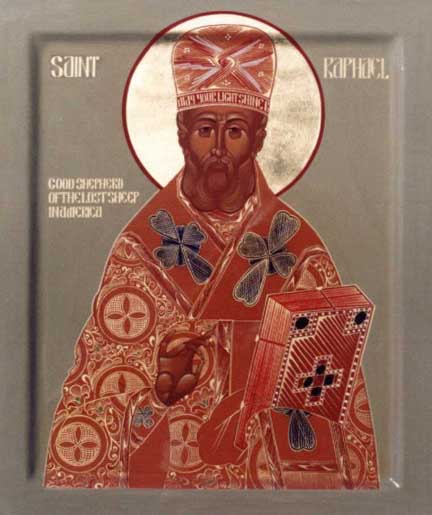reen12:
What is the process, in the Orthodox Church,
for declaring an individual a saint?
below from Orthodox America 1982
The word “canonization” is a Roman Catholic term having to do with the process by which the Church of Rome formally declares a person to be among the blessed in Heaven. Very few are familiar with the term “Glorification”. Some think it is merely the ‘orthodox’ word for canonization especially since in translations the word has sometimes been used. The words are not equivalent and refer to different processes.
[Deleted-- a description of the lengthy Roman process of investigation and trials with ‘promoters’ and ‘devil’s advocates’… and the legal understanding of virtue and sanctity tied up with Roman doctrines of merit and super-numerary works.]
In the Orthodox Church, however, there is no legalistic weighing of
evidence and examination of merits…but a process has been developed by which a saint is given public recognition with a culminating act called ‘glorification’.
In the early Church a martyr’s death inspired Christians at once to
begin venerating and praying to such holy men and women. Miracles worked in answer to prayer and from contact with these martyr’s relics further confirmed their sanctity. There was no single formal public recognition of these saints. A person is in heaven whether or not the Church on earth makes a declaration on it.
Saint John Maximovitch of San Francisco explains what happened next in the experience of the Church:
“the choir of the saints grew unceasingly…, however the spiritual life of Christians began to decline…there was no longer a clear sense of what divine righteousness is. …the general consciousness of the faithful could not always distinguish who was a righteous man and pleasing to God. In some places dubious persons attracted a part of the flock…so the church authorities began to keep a watch over the veneration of saints…by the time of the Baptism of Russia it had been
established that the acknowledgement of a new saint was to be performed by Church authority…which only testified of sanctity…”
In order to prevent the piety of simple people from being exploited,
the church authorities guard over and guide the procedures leading to final, full, and public recognition of saints. Thus, in the cases of St Herman, St John of Kronstadt, Saint Xenia of Petersburg [and also in the case of Saint John Maximovitch, and in the case of the Royal Martyrs] there had already been a long-standing
private devotion to these saints among Orthodox believers.
The bishops request a formal investigation into the lives and miracles of these saints in order to determine/confirm the sanctity for the
whole Church. When in the fullness of God’s time it is apparent that an individual’s life and works have been filled with the grace and glory of God, the bishop’s commission the writing of a service to that saint, the painting of an icon, and the establishment of a feast day on the calendar. The actual
‘glorification’ takes place on a predetermined day (sometimes the
actual feast day of the saint) when as many bishops and priests as possible gather for the solemnities.
To “glorify” the saints is to bestow honor and praise on them. Why? Because they are already honored by God, and so filled with His grace that, as Archbishop John has written,“it flows from them upon those who associate with them.” They have become Christlike - and all those seeking Christ, and loving Him, instantly recognize this quality in the saints and are drawn to them for this very reason.
There have been two noteworthy Glorifications/Canonisations recently. One was Saint Maria of Paris, a nun who died under the Nazis. She was declared a Saint by the Russian Diocese of France.
There is something about her on the Forum already:
forums.catholic-questions.org/showpost.php?p=400613&postcount=386
The remainder of this beautiful article on Saint Maria of Paris is on the website of the National Catholic Reporter
ncronline.org/NCR_Online/archives2/2004a/020604/ss020604h.htm
There is also an article here
jacwell.org/Fall_Winter99/Plekon_Mother_Maria.htm
**Maria Skobtsova: Woman of Many Faces, Mother in Many Ways
By Fr. Michael Plekon**


